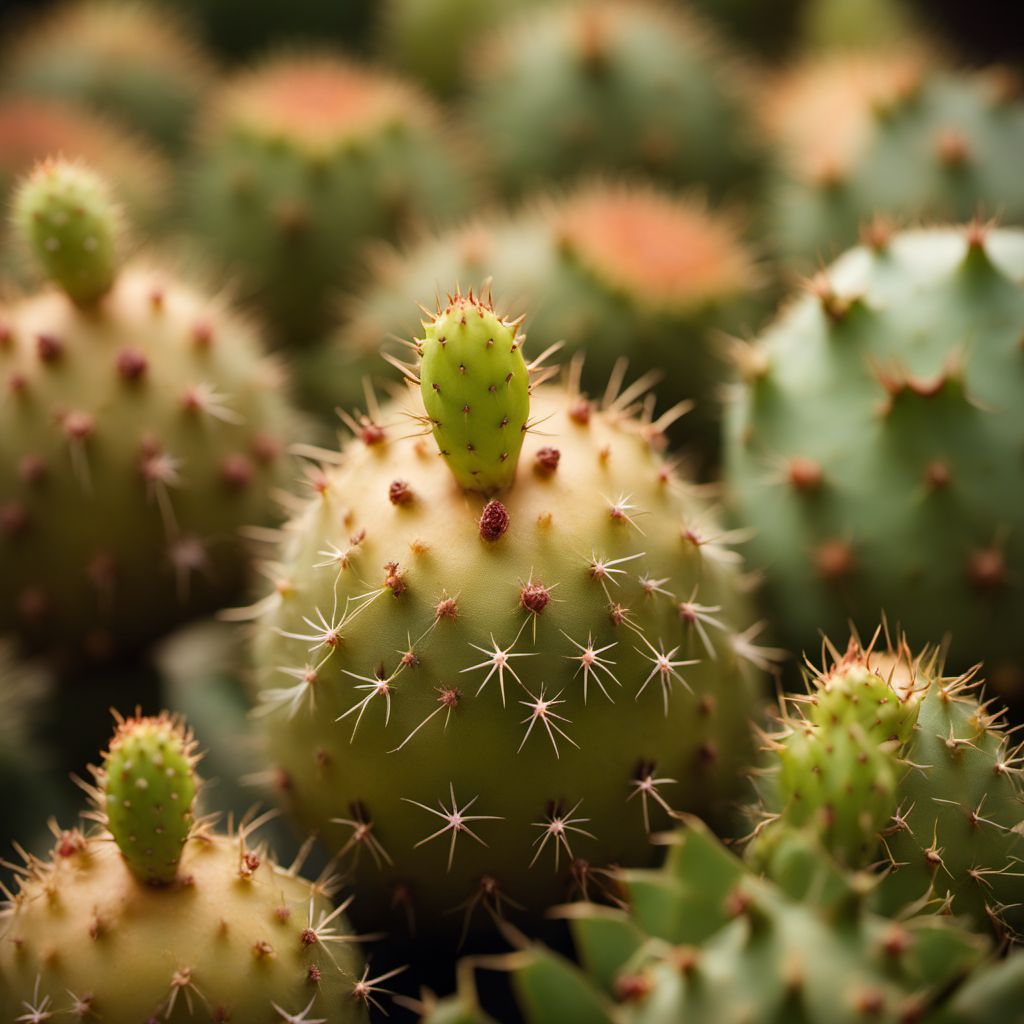
Ingredient
Prickly pears
The Vibrant Delight
Prickly pears are oval-shaped fruits with a thick, spiky skin that ranges in color from green to vibrant shades of red and purple. Once peeled, the flesh of the fruit is juicy and has a sweet, slightly floral flavor. The texture is similar to a watermelon, with small, edible seeds scattered throughout. Prickly pears are often used in desserts, jams, salads, and beverages, and they can also be enjoyed on their own as a refreshing snack.
Origins and history
Prickly pears have a long history and are native to the Americas, particularly Mexico and the southwestern United States. They have been cultivated for thousands of years and were highly valued by indigenous cultures for their nutritional and medicinal properties. Prickly pears have since spread to other parts of the world, including the Mediterranean region and parts of Africa. Today, they are enjoyed in various cuisines and are an important ingredient in traditional Mexican and Latin American dishes.
Nutritional information
Prickly pears are low in calories and a good source of dietary fiber, vitamin C, and antioxidants. They also contain minerals such as calcium, magnesium, and potassium. One cup of prickly pear contains approximately 61 calories, 14 grams of carbohydrates, and 5 grams of fiber.
Allergens
Prickly pears may cause allergic reactions in some individuals, particularly those who are allergic to other fruits in the cactus family. It is advisable to exercise caution and consult with a healthcare professional if you have known allergies or sensitivities.
How to select
When selecting prickly pears, look for fruits that are firm and free from blemishes or mold. The skin should be vibrant in color and not overly wrinkled. Avoid fruits that are too soft or have a strong odor, as this may indicate overripeness or spoilage. Additionally, choose prickly pears that have a good weight, as this indicates juiciness.
Storage recommendations
To store prickly pears, keep them in a cool, dry place away from direct sunlight. If the fruits are not fully ripe, they can be stored at room temperature for a few days until they soften. Once ripe, prickly pears can be refrigerated for up to a week. To extend their shelf life, you can also freeze the peeled fruits or make them into jams or preserves.
How to produce
Prickly pears can be grown in warm climates and are relatively easy to cultivate. They require well-drained soil and plenty of sunlight. If you live in a suitable climate, you can grow prickly pears from seeds or by planting cuttings. It is important to handle the fruits with care due to their spiky exterior.
Preparation tips
To prepare prickly pears, start by wearing gloves and using tongs to handle the fruits, as they have small spines that can cause irritation. Wash the fruits thoroughly and remove the spiky skin using a sharp knife. Cut the fruit into slices or cubes, discarding any seeds if desired. Prickly pears can be enjoyed on their own, added to salads, blended into smoothies, or used to make refreshing beverages such as agua frescas or cocktails.
Culinary uses
Prickly pears are commonly used in Mexican and Latin American cuisines. They are often used to make traditional desserts such as sorbets, jellies, and candies. Prickly pear juice is also a popular ingredient in beverages and cocktails. Additionally, the fruit can be used to add a unique touch to salads, salsas, and marinades.
Availability
Prickly pears are commonly available in Mexico, the southwestern United States, and other regions with a warm climate. They are also cultivated in parts of the Mediterranean, Africa, and Australia.

